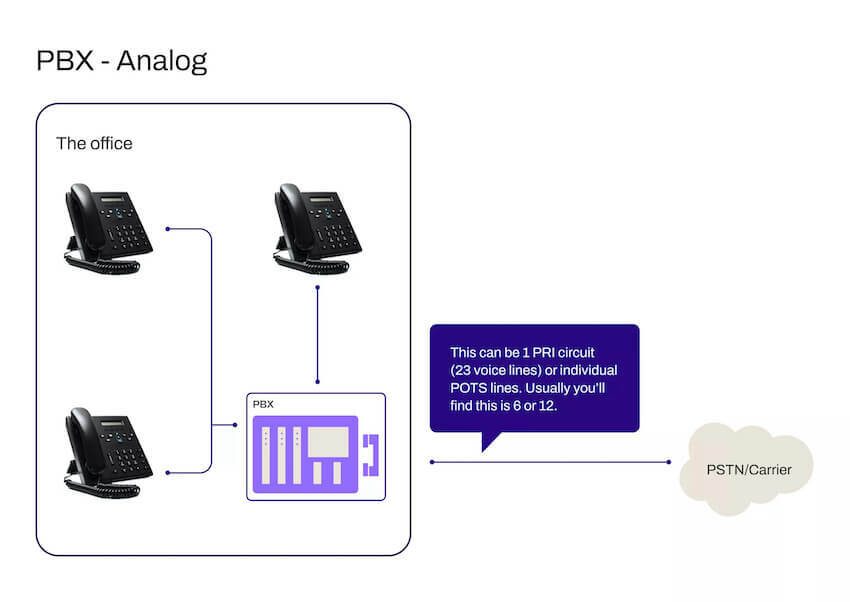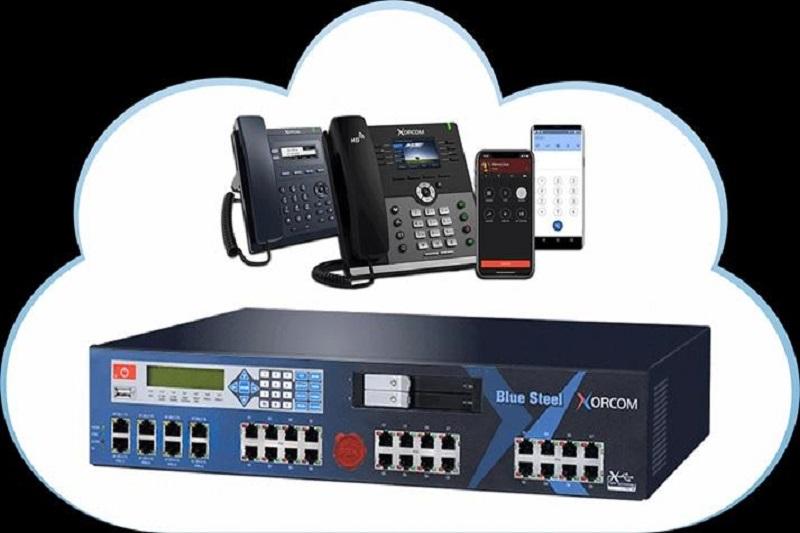IP PBX Network, What Capabilities Do The Central Systems Under The IP PBX Network Provide To Companies?
IP PBX Systems Can Provide Not Only Basic And Traditional PBX Features (Call Holding, Call Forwarding, Call Waiting, Video Calling, And The Like) But Also More Advanced Features Such As Voice Mail, Music Hold, Automatic Accompaniment, and.
These systems can provide a complete set of capabilities required by businesses whose infrastructure is based on SME/SMB technology and can be easily updated. Small and medium-sized companies can use central systems to improve video calls and configure them according to your needs.
Telephones under the network (Internet IP telephony), also known as VoIP phones, the above systems can direct phone calls to the Internet platform and, in simpler terms, convert voice signals into Internet data packets.
It is necessary to explain that traditional telephone headsets may make Internet telephone calls through analog trunk gateways, personal computers using dedicated software, or networked telephones.
Companies, because networked systems, while establishing a powerful multimedia connection, significantly reduce costs and are easy to use. The possibility of developing and integrating new services based on these central systems is very welcome.
Networked telephones provide various services over the Internet and Public Switched Telephone Network (PSTN) infrastructure.
However, they all offer essential features such as call forwarding, call holding, and voicemail.
Most of these systems are completely intelligent and can direct incoming calls to different units within a company. These devices can use a single phone line and save significantly on Internet phone services.
Typically, these products can support over 100 subscriptions and 30 simultaneous calls, perform best in providing call centers, and be used as PBX, GATEWAY, and MEDIA/FEATURE servers.
Users can configure PBX phone functionality through the web configuration tool.
In addition, the network administrator can define a specific profile for each user according to their job.
What features should a central system be equipped with?
Usually, a central network system should have the following technical capabilities:
- Network features include DDNS Client, DHCP Server, IPv4/IPv6/IEEE802.1Q, IP Assignment (PPPoE/DHCP/Static), SNMP v1/v2, TR069, Static Route Table, Trouble Shooting (Ping/Traceroute), VPN Client. (L2TP/PPTP/OpenVPN/N2N/IPSec) And VPN Server (L2TP/PPTP/OpenVPN/IPSec) support.
- Also, in terms of hardware, it must be equipped with a reset button, Ethernet interfaces, console interface, USB interface, dual-core processor with 1 GHz frequency, SDRAM memory with 1 GB capacity, the ability to support memory cards, etc.
- The PBX features of a central system should include the ability to create a blocklist, Busy Lamp Field, Call Detailed Record, Conference Room, Call Monitoring, Direct Inward Dialing Number, Direct Inward System Access, Distinctive Ringtone DND, Dialed Number Identification Service, Feature Codes FOP, Status Monitoring, Interactive Voice Responses, Mobility Extension, LDAP Server, Record File Download, SIP Register with, UDP/TCP/TLS, SIP Trunk, Secure Real-time Transport Protocol, Time Based Rule, WebRTC/ Web Dial, Voicemail & Voicemail to Email, etc. mentioned.
- In connection with the protocols and encodings supported by such systems, support for the audio coding system G.722/G.711-Ulaw/G.711-Alaw/G.726/G.729/GSM/SPEEX and the video coding system H .261/H.263/H.263+/H.264 and SIP (RFC3261)/IAX2 and RFC2833/SIP INFO/In-Band protocols.
The point we should mention in connection with these systems is that some models provide not only the essential functions of a traditional PBX (call holding, call forwarding, call waiting, video call, etc.) but also advanced features such as a panel.
The operator also has voicemail, music on hold, and auto attendant (auto attendant is a programming command with different, manageable menus that act based on user behavior, for example, connecting a specific user to a particular extension or a user clicks the other to the fax).
- It is also easy to manage, maintain, and update in small and medium-sized organizations. Small and medium-sized companies can set up their desired telephone system to improve efficiency.
- The most popular reasons for using a networked telephone system are cost savings, ease of development, and integration with new techniques and technologies. A networked telephone system integrates Internet-based services and Public Switched Telephone Network (PSTN) infrastructure. The network telephone system, or VoIP, transmits telephone call data over the Internet as standard Internet data packets. For an Internet phone call, you can use regular phones along with a gateway (Analog Trunk) that connects the phone line to the Internet, software that can be installed on a computer, or IP phones.
- Usually, all these provide essential functions such as call transfer, call holding, following my role, and using a voice answering machine. The Fallow Me feature is that if someone works in the company who should not miss any call and moves to different offices, the operator can program the system so that the first call goes to office one and office 2. Then, connect to office three and any place where that person is likely present. The automatic assistant and target groups connect incoming calls to the correct destination.
- Using an external gateway, you can transfer standard phone lines to these devices and use cost-effective internet phone services.
Scalability and easy extensibility
You can set up an internal system anywhere you have internet access. Typically, these systems support up to 100 internal subscriptions. Also, by adding a few units, you can increase the number of extensions available so that departments like sales or support can access more lines.
Easy web-based configuration
The user can configure the unique features of the PBX phone through web-based dashboard software. In this case, network administrators can define specific profiles for each department and users based in that unit according to their needs so that each user can set their silhouette through the web interface.
last word
In general, central systems under the IP PBX network to optimally use the network telephone line and eliminate the cost of wiring, eliminate the cost of intercity and international calls by providing communications through the ability to make internal calls using IP PBX, the possibility of creating a single phone call They are operated through a contact number regardless of the geographical environment using IP PBX and wireless solutions for large and industrial settings.

